How could Coperni follow last season’s viral spray-on dress? With a pack of robot dogs in a theatrical performance with models on the runway, of course.
Staged at Théâtre National de la Danse, Coperni’s autumn/winter 2023 show was based on a reimagining of French fable Le Loup et l’Agneau (the wolf and the lamb) by Jean de la Fontaine.
The runway models took on the role of the lambs, while the wolves were replaced by five robot dogs, one of which visited influencers in the front row and later pulled a jacket off model Rianne Van Rompaey in a choreographed sequence, before returning it to symbolise harmony between the two. Later, the same one held on to Lila Moss’s mini swipe bag, before giving it back as she passed by. At the end, the robots took a bow, as models walked the finale. The collection built on Coperni’s techno-chic aesthetic, with its signature spandex tops redone in leather, rubber versions of its signature Bridge boot, emoji-inspired silver brooches gathering draped tops and blanket coats.
Expectations for Coperni were high this season, after the brand created the most viral moment of 2022, presenting a spray-on dress on supermodel Bella Hadid last September. “It was just crazy, we could never have expected the reaction,” says creative director and co-founder Sébastien Meyer, speaking at the brand’s new 400m² Paris HQ, three days out from the AW23 show. Coperni gained over 300,000 followers overnight and sales grew “significantly” on the previous season, both from wholesale and Coperni’s e-commerce store, where the brand couldn’t restock fast enough. “Our Instagram just broke,” Coperni CEO and co-founder Arnaud Vaillant says. “We couldn’t believe it.” The duo, partners in life and work, have since been cooking up their next act, while grappling with intense new demand and pressure from the industry.
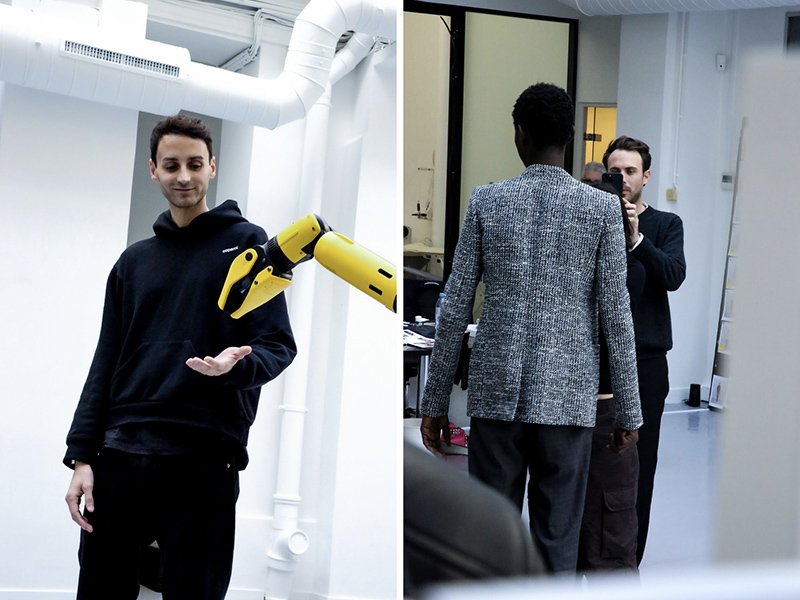
Coperni was already on a strong growth trajectory before the spray-on dress. Sales had doubled every season since 2021, reaching a few million in 2022, which is all Vaillant will disclose. But SS23 was an acceleration of Coperni’s brand awareness on a global scale, says Stefano Martinetto, CEO of accelerator Tomorrow Ltd that works with Coperni among other brands. It took the brand from a buzzy up-and-comer known amongst fashion insiders to a globally recognised label, the founders say.
“We didn’t want to compete with the [spray-on dress] moment last season. Because it was so unique, so magical, so strong,” says Vaillant. “We didn’t want to do a big finale with a supermodel. We really wanted an evolution. We’re fascinated by tech, so we always try to have experiences and technology in our shows.”
Other brands, observing the viral attention of the Coperni moment, set out to create their own this season, from Division’s tablecloth dress at Copenhagen Fashion Week AW23 to Heliot Emil’s man on fire in Paris on Tuesday. Seeking internet buzz to reach new audiences and markets has become a way for often emerging brands to use the runway as a stage to gain global attention. That’s come with some kick back. In cities including Milan and New York, others have made a statement in their simplicity, focusing purely on the clothes over spectacle.
For Coperni, these show concepts aren’t about tricking the internet into breaking. “It was organic. It wasn’t manufactured by men in suits in a boardroom,” says Martinetto. That said, planning another “wow” moment is difficult. “This will be an important show [for Coperni] because it’s a manifestation of the quality of the product and the solid direction of the brand, above and beyond an opportunity of viral marketing,” he says. “Effectively, they haven’t modified the strategy after that [SS23] moment.”
Coperni did have to modify their direct-to-consumer operations, however, to meet the unprecedented demand, according to Tomorrow, which replenished the online store with all held stock available for sale, used their strong supplier relationships to secure quick turnaround re-orders on hero items like the swipe bag, spandex tops and bridge boots and set up a pre-order system, as to not disappoint online customers searching for sold-out pieces.
Prepping under pressure
On Tuesday, three days before the show, the pressure was on and energy was high at Coperni HQ. Vaillant and Meyer were casting models, while the Boston Dynamics team charged and tested the robot dogs. (Models were told not to take photos, to protect the surprise.) Friends passed through, their miniature greyhound (named Neo after The Matrix protagonist) roamed around and both Meyer and Vaillant’s parents were on hand to help, occasionally filming their sons and the robots. Normally, casting would be further along by that point, Vaillant said. But Coperni’s casting director Samuel Ellis (DM Casting) also casts for Schiaparelli and Paco Rabanne, who both returned to the PFW calendar this season, pushing things back.

Coperni was running out of time. And it was important to cast the models as soon as possible, to try to teach them how to interact with the robots, which arrived in Paris on Monday. “Until the last minute, we always worry,” Meyer says, which is reminiscent of last season, when Hadid hadn’t practised the full spray-on dress sequence before the show. “This time we want it to be perfect. I’m very scared about the [robot] action—we haven’t practised it enough yet.”
After last season, Meyer and Vaillant are ready for criticism that the concept distracts from the clothes. “Last season, some people were like, ‘The collection came in second place’. But, that’s the game,” said Vaillant. “We are proud of it. Next season maybe it’s going to be more about casting, after, maybe it’ll be more focused on the collection. That’s how we want it to be.”
Arguably, Coperni doesn’t need the fanfare of spray on dresses or robotic dogs to spark interest around their clothes. Coperni collections themselves are punctuated with tongue-in-cheek products with viral potential that appeal to young consumers. The AW23 collection features a Swipe bag made of meteorite that hit Southern France 55,000 years ago (Meyer proudly presented its authenticity certificate); a totally reflective dress made in collaboration with fashion school Les Arts Decoratifs; a jacket hand painted from an AI-generated image of a robot and a lamb; and a small brown handbag that almost exactly replicates the iPhone handbag emoji (“Gen Z are going to love it!” Vaillant quips). The designers don’t mind that robots may overshadow these details on first look. “It’s a show that we are doing,” Meyer says. “People want to live an experience!”

Meyer and Vaillant approached advanced robotics company Boston Dynamics shortly after the last show and have been planning this concept over the last six months. The duo flew to Boston earlier this year to “meet” the robot dogs. They decided to work with Boston Dynamics because of a charter the company signed pledging that they will never weaponise the robots. There’s a replica show set built in Boston Dynamics’s HQ, where the robots have been practising the movements for weeks, choreographed by dancer and movement director Eric Christison remotely from Paris, says Boston Dynamics director of marketing and communication Nikolas Noel, who operated one of the robots during the show.
This isn’t the first time we’ve seen robots on the runway. From McQueen’s robotic arm spraying Shalom Harlow for SS99, to a giant robot walking the runway with Irina Shayk at Philipp Plein in AW18, designers have long experimented in this space. For Coperni, the performance is blending the old and the new, taking a well-known fable and rethinking it to examine the relationship between humans and tech. Plus, they’re coordinating a full cast of models and five robots to interact and move together.
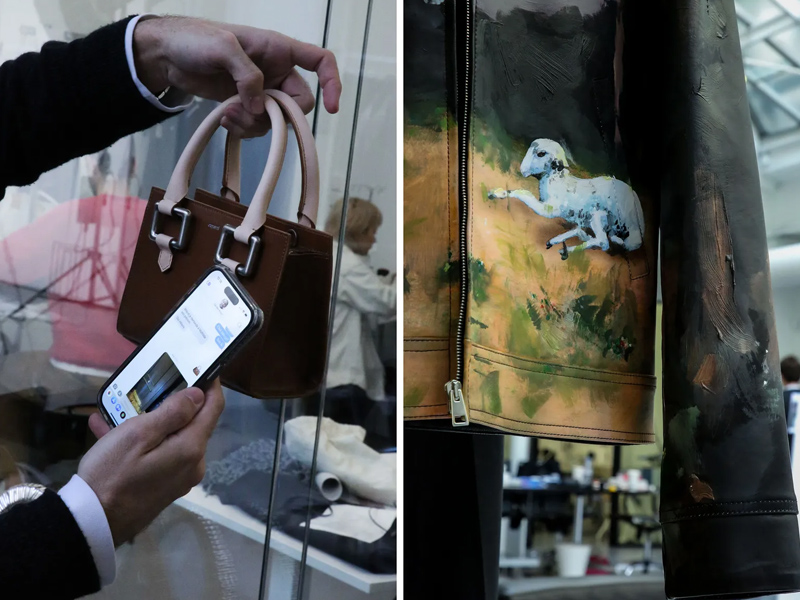
“It’s always stressful. For us, it always comes from a good place, we want to bring fashion to the new generation and try new things. But then you never know, people will always judge,” Vaillant says. “There’s two types of people, ones who believe in technology and those who are maybe scared by it.” “We are open to the critics, we want to open the conversation,” Meyer adds.
Model Van Rompaey visited the Coperni studio to practise her robot moment a day ahead of the show, before the team decamped to the venue and did a run through with one model and the full “pack” of robots.
On a first try, the robots were slightly off centre. When they walked they were operated by the Boston Dynamics team in real time, backstage with controls. But the more complex movements like the sequence with Van Rompaey were programmed in after being designed by Christison, says Boston Dynamics’s Noel. Lines from Le Loup et l’Agneau sounded across the vast venue, before thumping techno.
“I’m stressed,” Meyer says with a smile. “It’s always like this.” Watching Christison perform the jacket stealing sequence with the robot, the designer seemed more at ease. “Oh mon dieu,” he whispers, smiling, filming the action on his phone from a mocked-up front row, to check the view for guests (and possibly how it might look when filmed for social media). Vaillant was stuck at the studio, still casting, which Meyer expected to finish off with him the morning of the show.
Hours before the show, the casting was finally done. Meyer and Vaillant were watching a rehearsal with some of the models, making final tweaks. Vaillant himself ran onto the set himself to help correct models going in the wrong direction. Van Rompaey practised “the” moment, with varying degrees of success at first. “I’m so excited,” Vaillant beamed backstage, where champagne was already chilling for the post-show celebrations. “Did you see the rehearsal? It’s like being at the theatre! This is what we love, creating an experience for our guests and showing them innovation – we can’t wait.”
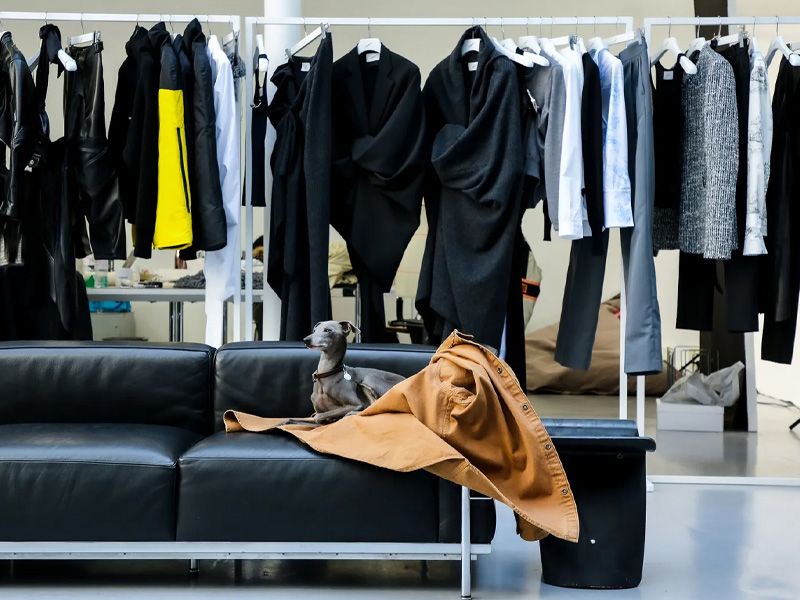


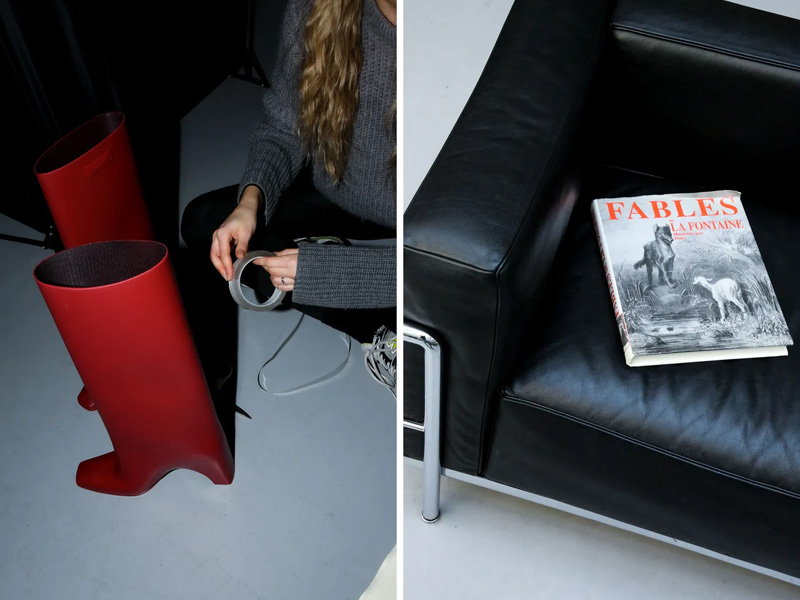
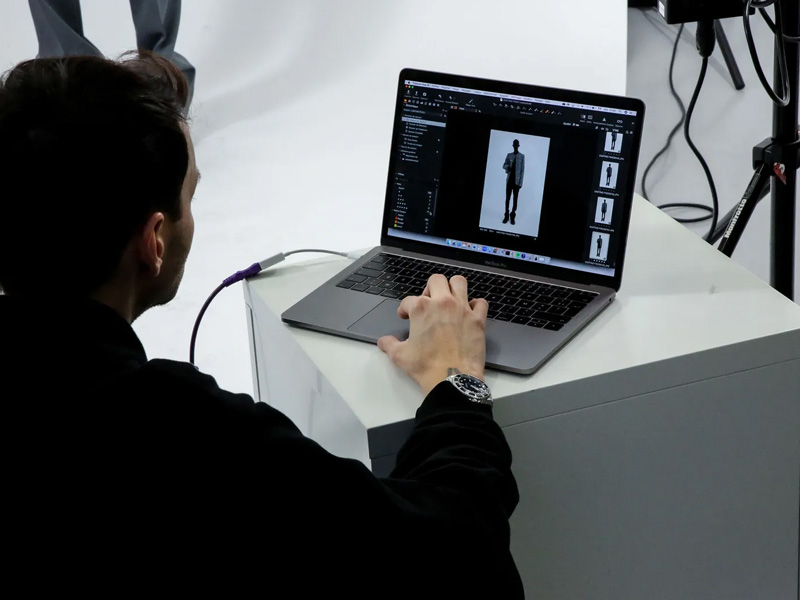

This story originally appeared on Vogue Business.





